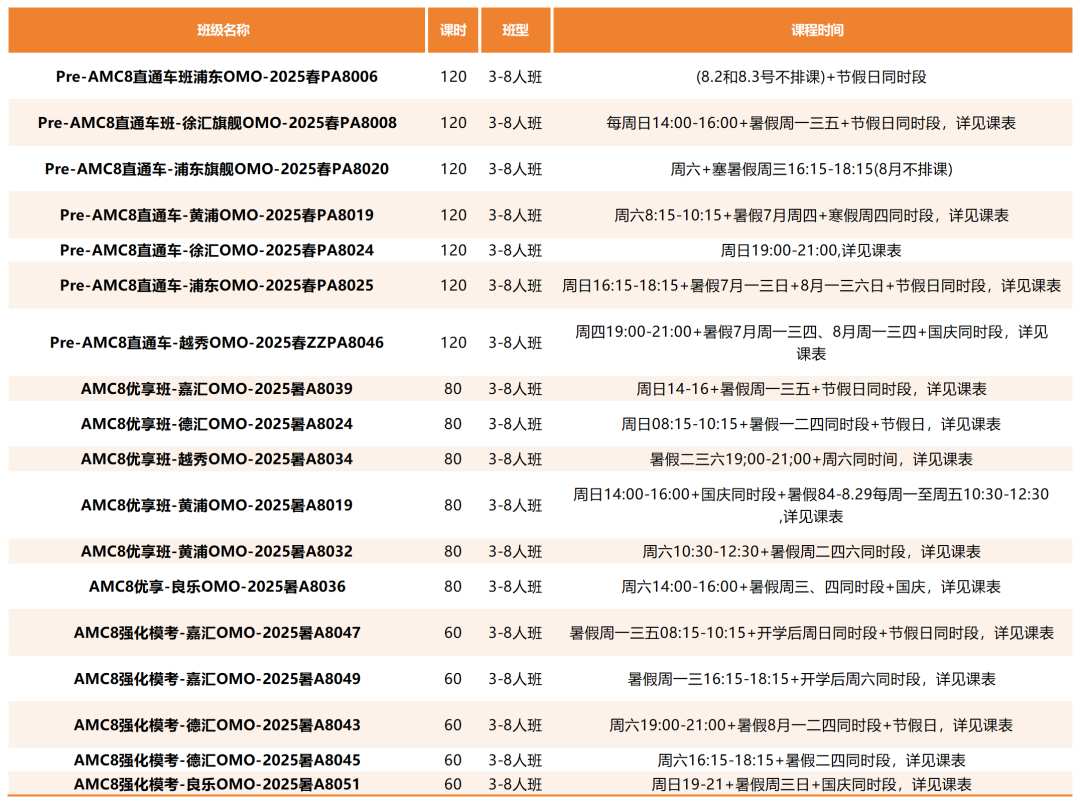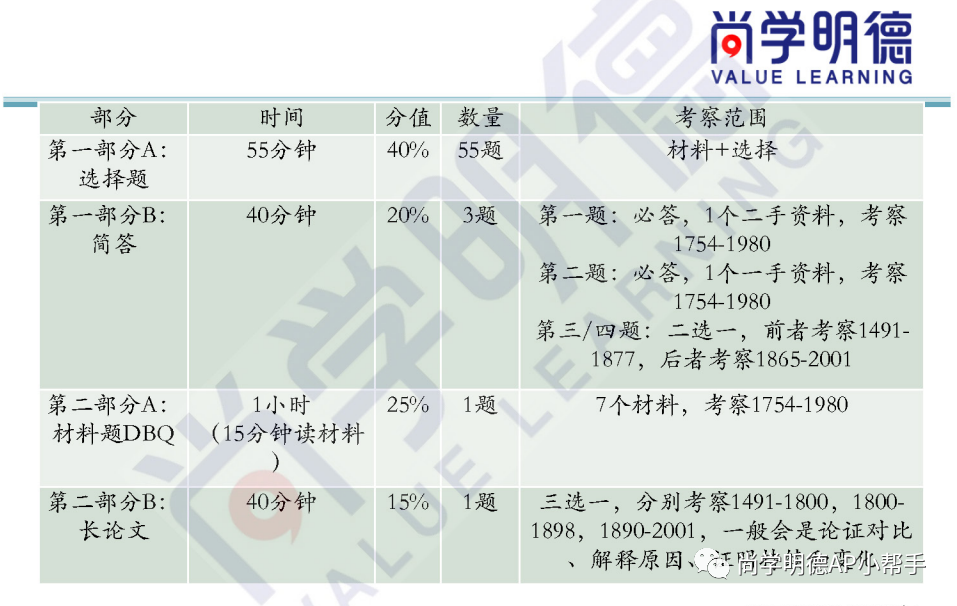1月8日托福考试落下帷幕,考情速递也已经出炉了!
2025年第一考题目难度还是很友好的!写作整套原题重复 阅读也均有不少原题重复
阅读
R1
The Angiosperm Revolution
2021阅读真题100篇Passage 1-50 / Passage 49
Of all the kinds of modern land plants one group dominates: the angiosperms, or flowering plants. With over 250,000 living species, they are the majority of plants of most habitats—except marine environments, which are still habitats for the more primitive algae. But angiosperms were a comparatively recent development in plant evolution. They arose in the mid-Mesozoic (approximately 200 million years ago to 145 million years ago), but by about 100 million years ago they had pushed the conifers (plants having cone-shaped reproductive structures rather than flowers for reproduction) into the background. Even earlier types of plants such as ferns are now restricted to certain wet habitats, and many of the dominant gymnosperms (plants with exposed seeds, such as conifers) of the early Mesozoic have now been largely replaced by angiosperms; the formerly dominant gymnosperms that did not become completely extinct now survive in comparatively few places.
Why were the angiosperms so successful? A major advantage they have over more primitive plants is their efficient mode of reproduction—the flower and all of its complex reproductive mechanisms that ensure success. Instead of the inefficient wind—pollinated gymnosperm seed, which wastes a huge amount of pollen and is dependent on random breezes, angiosperms have evolved flowers specifically as devices to attract pollinators—mainly insects (especially moths, butterflies, and bees) but also birds, bats, and other flying creatures. The pollinators ensure that the pollen is carried directly from one flower of the same species to another, which is more efficient than relying on the wind. This process of delivery is called cross-pollination. The reproductive cycle is highly modified: the ovules (egg-producing organs) are fully enclosed within protective covers called carpels, which form the core of the flower. The carpel protects the ovule from drying out, from fungal infection, and from predation by plant-eating insects. Pollen-producing organs called stamens are surrounded by petals (which serve to attract the pollinator and guide it to the ovules in many cases) and an outer covering of sepals for protection. Typically, a pollinator gets pollen stuck onto it as it climbs into a flower, seeking the nectar that is generated to lure it. The ovule is usually pollinated by the sperm carried from a different flower, thus minimizing self-fertilization (but angiosperms can also self-fertilize if cross-pollination is not possible).
Once the pollen has been delivered, a pollen tube transports the sperm to the ovules. Here angiosperms have another advantage: double fertilization. The pollen carry two sperm nuclei, one of which fuses with the egg nucleus to form the embryo, the other of which fuses with two other nuclei to form a food supply for the embryo. This means that angiosperms don’t need to invest a lot of energy creating food stores for each seed until it is fertilized (unlike gymnosperms, which create food even for infertile seeds).
The entire process of fertilization and producing an embryo takes place in only a few weeks or days, so angiosperms can sprout, flower, reproduce, and die in a single season if necessary. By contrast, most gymnosperms are slow to grow and reproduce (usually taking at least eighteen months between reproductive cycles) and cannot accomplish the entire process in a single season. For gymnosperms such as evergreen conifers to live in highly seasonal, cold-winter climates, they must be able to survive the cold and shut down much of their physiological systems during winter. Many angiosperms, on the other hand, are annuals—sprouting in the spring, flowering, and producing seeds that can survive until the next winter while the rest of the plant dies. This rapid reproduction enables them to quickly exploit habitats that other plants cannot.
Finally, angiosperms are known not only for their rapid growth rates but for their ability to grow back quickly after they have been munched by animals. Think of how quickly the grass grows back after you mow it (or an animal grazes it). By contrast, ferns cannot grow back so quickly after they have been heavily eaten, and often die if the damage is too great (such as when an animal eats the growing tip of the plant) whereas many angiosperms can be eaten right down to their roots but grow back again.
R2
Essentials of Chinese Art
第一段:
学者们开始质疑中国艺术是否有固定不变的特点。以往的观点多基于某些时期男性精英阶层的审美和价值观,而忽略了民间、宗教、工艺艺术以及女性的文化活动。此外,人们越来越认识到中国艺术与其他文化的互动与借鉴。尽管对“本质主义”的质疑存在,但仍可以探讨中国艺术在世界艺术史中的独特性。
第二段 :
中国文明与其工艺品密切相关。例如,古希腊人和罗马人称中国为“丝之国”,而早期现代欧洲提到“瓷器”时可能同时指向中国。中国在陶瓷、玉器、丝绸、漆器等工艺领域技术卓越,甚至达到工业化生产规模。许多工艺品不仅是文化装饰,还对经济和社会产生重要影响。
第三段:
“工艺艺术”在中国语境中指代高度技艺和组织化的传统,而非西方现代语境中“工艺”与“美术”对立的贬义概念。虽然中国艺术传统也区分“书法、绘画、建筑”等文人艺术与依赖工艺技能的艺术,但这种区分随着时间的推移变得流动。例如,古代陶瓷和青铜器被文人和皇室收藏家珍视,而许多工匠也因技艺精湛而闻名。
第四段:
祖先崇拜自商代以来便是中国文化的重要特征,并持续至今。这种文化传统直接催生了与祭祀相关的艺术形式,包括墓葬建筑、雕塑、青铜器、石器、陶器、金属器、漆器和玉器等。同时,祖先崇拜也塑造了中国文化的历史意识,影响了书法、绘画风格以及艺术史研究。
第五段 :
汉字自商代以来成为中国文化统一的重要力量,尽管最初仅限于精英阶层使用。书写在构建文化认同中具有巨大作用,并因其神圣性而提升了书法、碑刻、印刷书籍、题款绘画等艺术形式的地位。这种文字文化对中国艺术的发展影响深远。
R3
欧洲纺织工业
在18世纪的时候,欧洲整体发生了非常大的变化,因为人口的快速增长使得人均的土地面积快速的缩小。相应的很多人无法从土地上获得足够多的粮食和收入,这些人就有很大的需求,要找其他的工作来填补自己的收入。而城市在这个时候因为工业化的出现,也渴望大量的劳动力,因此在欧洲就出现了比较早期的作坊制度。
在此之前,农民们的手工业的产品往往是主要满足自己家里的需求, 也就是没有进行大规模的销售,但是随着农村经济的崩溃,很多的农民开始去接一些城里发来的单子。因此一个新的工业体系迅速诞生。这个新的体系就是家庭的手工业,这与工厂还有非常大的差别。也就是在最开始的时候,并没有出现城市里的大规模的工厂,而无限的是一些农村雇佣的手工作坊。这表明工业的早期其实是非常有活力的。我们把早期的农村的作坊的萌芽称为外包体系其实更为合适,也就是商人有可能是把原料来外包给这些作坊,也有可能是直接提供原材料。比如说商人提供羊毛,然后工人将其仿成布,然后再按成品的价格来进行回收,因此在当时有无数。这种合作的方式。相应的也就有农民会自己购买原料,然后再卖给这些双人。
有的时候还有几个作坊互相合作,来完成不同的工序。本质上还是需要去赚取更高的收入。而外包制度之所以发展的特别好,是因为它有很强的竞争优势。因为有很多劳动力,需要在农田和作坊之间来相互切换。而且还有非常多的没有土地的居民,他愿意以很低的工资来工作。而且农村还不受监管,因此作坊的主人以及商人可以进行大量的压榨。当然也可以不停的去进行各种各样创新的实验。在城市里面还有工会,但是在农村就没有这个必要。
因此在农村的手工作坊就不需要去遵循严格的行业标准。因为这些行业标准虽然会保证质量,但是相应的也会阻碍创新。相应的一些纺织品以及工业产品,在农村都可以有很好的质量。然而如果想制作精美的瓷器或者是针织物品,则需要很高超的收益,并且只能在工厂的车间来进行生产。但是农民的技术已经足以满足绝大多数日常用品的生产。
R4
The River Nile in Ancient Egypt
重复20240817真题/20191027阅读真题
The special character of the Nile, which made it central to ancient Egyptian culture, was its annual inundation (flooding). During June the river began to rise, and a quantity of green water appeared. The color is said to have resulted from the brief period of reproduction of myriad
minute
organisms. During August the Nile rose rapidly and assumed a muddy red color created by the rich red earth brought into its waters by its tributaries. The Nile continued to rise until mid-September, then remained at that level for two or three weeks. In October it rose again slightly, then began to fall gradually until May, when it reached its lowest level.
The Nile has created a convex shaped in an elevated curve floodplain. In convex floodplains, sediments (clays and silts) are deposited by flood waters, making the land nearest the river have the highest elevation. The convex floodplain is marked by natural levees that form elevated barriers immediately adjacent to the river. These levees rise a few meters above the seasonally inundated lowlands. When the Nile floods, the water covers most of the low-lying land up to the edge of the desert. When the floods subside, the waters are trapped behind the levees and prevented from returning to the river. The benefit of such topography is obvious: the water can be used where it stands or can be channeled to other areas as dictated by agricultural needs.
Ancient records, those preserved both in texts and in the visible evidence on ancient devices for measuring water levels called nilometers, indicate that a flood of six meters was perilously low and that one of nine meters was high enough to cause damage to crops and villages. A flood of seven to eight meters was ideal in that low-lying areas and basins throughout the whole valley would be flooded up to the edge of the rising ground of the desert, but towns, villages, and dikes that served as paths and water barriers remained above the water level.
The ancient Egyptians fully understood the extent to which their lives and prosperity depended on the unfailing regularity of the inundation. The occasional low flood and consequent shortage of food were enough to cause much anxiety among the populace at the beginning of each flood season. Ancient Egyptians, therefore, never became completely confident about the annual inundation and its gifts, even though it usually brought a layer of fresh, rich silt and waters for irrigation that made agriculture in the Nile Valley relatively easy. The generally predictable crops and resulting surplus freed a significant segment of the population from agricultural labor, allowing for the development of nonfarming occupations, such as full-time craftspeople, bureaucrats, and priests.
The importance of the Nile to Egyptian civilization is reflected in the role that it played in religion and the myths that revolved around the river. The Nile was known in antiquity by the Egyptian name Iteru, meaning great river. The personification of the inundation was a god named Hapy, who was associated with fertility and regeneration. The ancient Egyptians had various conceptions of the origin of the inundation. Some texts relate that it began in a cavern at Philae, while others credit the site Gebel Silsila (about 100 kilometers to the north) as the source. It was believed that veneration of the gods associated with these sites in the Aswan area could ensure a sufficient inundation. The Famine Stela, a text carved on rocks at Sehel near Philae, records a famine that was averted by donations of land and goods to the Temple of Khnum at Aswan. This text was formerly thought to date from the reign of Djoser (2687-2667 B.C.), but in reality it dates to the Ptolemaic period some 2,500 years later.
R5
Pollination
第一段 :树木的繁殖依赖风、水或动物作为媒介将花粉从一棵树传递到另一棵树。然而,大型依赖动物授粉的树面临特殊的挑战。它们需要生产足够的花蜜和花粉来吸引授粉者,但如果产量过多,可能导致授粉者停留在同一树冠内而不转移到其他树上。此外,如果同一物种的所有树同时开花,可能会导致授粉者数量不足以满足需求。
第二段 :为了应对这些挑战,树木采取了多种策略。例如,在其他物种不开花时开花,或者在温带地区通过将花期分布在整个夏季来避免冬季限制。然而,这仍无法完全解决让授粉者离开一棵树并转移到另一棵树的问题。一些热带树木通过部分开花、部分结果的方式,给授粉者一种“分散老师”的印象,而其他树种则通过全年少量持续开花吸引授粉者。此外,授粉者(如蜂鸟和蝙蝠)会遵循复杂的觅食路线来访问分散的花朵。
第三段: 与以上策略不同,热带常绿林中的“群体开花”现象展示了另一种授粉策略。在东南亚的婆罗洲和马来西亚,许多顶层树木,如龙脑香科植物,会每隔数年集中开花,并产生数百万朵花。在这种现象中,尽管树木同时开花,但个体物种的开花是依次进行的,以减少授粉者之间的竞争。此外,单朵花的寿命仅为一天,有助于吸引主要授粉者(如薊马)在轻风的帮助下传播花粉。
第四段 :群体开花的树木主要依赖非专门化的授粉者,这种策略扩大了可用的授粉者数量。大规模开花的视觉效果可以吸引远距离的授粉者,而授粉者之间的竞争可能迫使部分授粉者转移到其他树上,从而提高授粉效率。这种机制进一步展示了热带树木在繁殖策略上的多样性与适应性。
R6
动物群体
暂未找到文本
R7
Rural Manufacture
暂未找到文本
R8
Group living
重复20240921真题
Many animal species live in groups. Biologists used to think that group-living animals exhibit self-sacrificing behaviors that benefit the group. Some animals limit their rate of eating even when they still need food.
Less cooperative groups may exhaust their food supply and therefore perish. Today, however, it is generally agreed that except for a few unusual circumstances, individuals in a group behave in ways that benefit themselves. Group living occurs when the gains it brings to an individual outweigh the costs.
One benefit an individual animal can get from living in a group is increased vigilance. A leopard depends on the element of surprise to catch an antelope. If the antelope spots the leopard quickly enough, it can run away. A single antelope doesn't have an infinite supply of vigilance, however; for one thing, it has to spend much of its time with its head to the ground to graze (eat). But if individual antelopes come together in a group, they in effect acquire more eyes and ears. in addition to being less likely to be surprised, the antelopes can also spend more time eating-which can raise their individual fitness even more relative to solitary antelopes. And even if a predator does strike a group of antelopes, each group member faces a smaller risk (a phenomenon known as the dilution effect). Animal groups produced by dilution effects are often called selfish herds, because their herding behavior is not based on any coordination or cooperation but is instead the result of a selfish scramble of individuals competing for a position near the center of the group.
Adélie penguins, which live on the coast of Antarctica, vividly illustrate how group living allows individuals to escape predators. They dive off ice sheets into the ocean to search for fish; but when they take the plunge, they sometimes get eaten by leopard seals cruising just offshore. Rather than jump in alone, the penguins crowd together by the hundreds and then leap as a group. Together, they can overwhelm the leopard seals, which can't focus on any single individual. The huge numbers of jumping penguins may also create a dilution effect because the likelihood of any individual being caught is reduced. Predators can benefit from group living as much as prey. American white pelicans practice "fish herding," paddling on the water together in a tactical formation to drive fish into shallows or into dense concentrations; the birds can then easily scoop up their prey. Each pelican in a fish-herding team gets more prey than if it foraged alone.
While living in groups can bring many benefits, it can impose costs as well. Individuals living in big groups are at greater risk of getting sick, for instance. Parasites and diseases can spread more effectively in dense groups of animals than among solitary animals. Large groups also present more opportunities to mate. Females may benefit from these opportunities because they can mate with higher-quality males. Males that can mate with many females can also enjoy higher reproductive success. In species where males provide parental care, group living may also mean that many males are not actually the fathers of the offspring they are caring for. Finally, living in a group often means more competition for limited food, space, or other resources.
By measuring the costs and benefits of group living in particular cases, biologists can explain why individual members of social groups behave in the ways they do. One of the most important lessons from such studies is that the costs and benefits of a given action will be different for different individuals. A large, dominant animal may be able to reap the greatest benefits of residing in a group-for example, being in the safest, central part of the group—and at the same time pay only minimal costs. Dominant individuals are likely to prevail in any competition for food or other resources, so that they suffer little loss from being in the group. Costs are higher for subordinate individuals—a young meerkat in a group, for example, has to help rear the offspring of the dominant meerkats, but since it faces a high risk of being killed by a predator if it lives on its own, this may still be a small price to pay.
听力
C 1
The professor suggested that Rick study African grey parrots instead of great apes for his report in the animal behavior class. African grey parrots are extremely intelligent. They can understand abstract concepts such as counting and differentiating objects. They can even use specific sounds to label colors, demonstrating the concept of hierarchical classification. Rick was quite surprised. The professor explained that the intelligence of grey parrots is related to their complex living environment and long lifespan. They migrate between jungles and grasslands, traveling about 60 kilometers a day. Their long lifespan gives them more opportunities to cope with environmental changes. The professor reminded Rick that although the sounds made by grey parrots carry meaning, they cannot be called "language".
L 1
In the early 20th century, with the rapid development of society and continuous innovation in the art field, some composers began to question traditional musical forms. They were eager to break free from the shackles of tradition and explore new ways of music creation. This spirit of exploration led to the gradual emergence of the avant-garde music style. However, this musical style was not well-accepted by the public at that time. Many people thought it was too radical and hard to understand. Some even proposed that the government should ban this kind of music. John Cage was one of the most famous avant-garde composers in the 20th century. His early works were in a traditional style, but he soon shifted to creating unique works. Two events that influenced him had a profound impact on his musical outlook. First, he met the avant-garde painter Robert Rauschenberg. Rauschenberg's "White Paintings" showed that even without any images on the canvas, art could still be perceived through natural phenomena like shadows and reflections. Rauschenberg's works made Cage realize that the definition of art could be broader. Second, Cage's experience in the anechoic chamber at Harvard University also deeply affected him. The design of the anechoic chamber absorbed all sounds. In it, Cage heard the sounds of his nervous system operating and his blood circulating, which made him realize that music didn't have to be deliberately composed and that the surrounding sounds themselves could be music. Based on this concept, Cage created his masterpiece "4'33"", also known as the "silent piece". This piece contains no musical notes. The performer just sits still in front of the piano, raising and lowering the piano lid to mark the start and end of the movements. Although the audience and critics had a strong reaction at that time, thinking it was an absurd practice, Cage conveyed the idea that "silence is music" through this work, emphasizing attention to environmental sounds. He hoped that the audience could listen carefully to the silence at that time and experience all the sounds brought about by chance in the silence. This also represented an important musical philosophy of Cage: the most basic element of music is not performance, but listening. Cage's musical concepts and creative practices have had a profound impact on the subsequent development of music. He broke the boundaries of traditional music, expanded the definition and creative methods of music, making music no longer limited to the combination of notes and melodies, but could include more sound elements from daily life.
L 2
Microorganisms are the most species-rich group of organisms on Earth, including bacteria, fungi, and yeasts. They are widely distributed in various environments and can even be found in extreme environments, such as deep-sea hydrothermal vents or subglacial lakes in Antarctica. Although microorganisms play a crucial role in the ecosystem, they often receive insufficient attention. In the past, researchers used to think that microorganisms were almost everywhere and that their population changes were minimal. However, modern research has revealed that the types of microorganisms vary from region to region, and the microbial communities in different environments are significantly different. For example, the microorganisms in soil are completely different from those in seawater. This diversity enables microorganisms to play multiple important roles in the ecosystem. The role of microorganisms in the ecosystem cannot be underestimated. They help plants absorb nutrients, promote plant growth, and provide support in resisting diseases and drought. In particular, mycorrhizal fungi form a symbiotic relationship with plant roots, exchanging carbon sources to provide the nutrients plants need while enhancing the disease resistance of plant roots. In addition, microorganisms also play an important role in the plant pollination process. Although plant pollination is usually done by insects or birds, the microorganisms in honey may change the properties of nectar, thus affecting the behavior of pollinators. If the ecological balance is disrupted, it may weaken the relationship between plants and pollinators and then affect the stability of the entire ecosystem. Although microorganisms are of great importance to the ecosystem, there is relatively little research on them at present, mainly due to the high cost of technology and the relatively low interest of the academic community in this research. However, as the awareness of the role of microorganisms gradually increases, more attention will be paid to their research in the future.
C 2
The student is an environmentalist. He thought that the broken heating in the dormitory was actually environmentally friendly, so he didn't tell the staff. The staff emphasized that any problems should be reported to him.
L 3
The potato, a seemingly ordinary crop, has had a profound impact on the agricultural economy throughout history. It originally originated in the Andes Mountains of South America and was domesticated by the local Indians about 8,000 years ago. In the 16th century, with Columbus' discovery of the New World, the potato was brought back to Europe and gradually became an important crop. The potato, as an ordinary crop, has had a significant impact on the agricultural economy in history. It not only increased agricultural productivity, reduced issues related to land and war but also played an important role during economic crises and promoted world peace to a certain extent.
L 4
The self-protection methods of two kinds of butterflies
口语
TASK 1独立口语题
Do you agree or disagree with the following statement?
It is important to protect children from learning too soon about life’s difficulties.
Use specific reasons and details in your response. (亲子类独立话题——2024年未出现过❗️)
陈述思路
●同意:
1.保护孩子不早早接触生活的困难有助于保持他们的纯真和对世界的好奇心。
eg: 童年是探索、玩耍和想象的时光。如果孩子们过早地被迫面对诸如经济拮据、疾病或家庭问题等挑战,可能会剥夺他们无忧无虑的童年
2.过早让孩子了解生活的困难可能会给他们带来不必要的压力。年幼的孩子情感上尚未具备应对复杂问题的能力,过早地让他们了解这些困难可能会引起焦虑和恐惧。
eg: 父母争吵/离异——对孩子的身心健康造成负面影响(这里可以用到2024年亲子类关系独立题的语料:详细咨询【EISWAY教育】
●不同意:
1.逆境可以造就孩子坚韧的意志以及——(人文类语料:详细咨询【EISWAY教育】)
2.迎接生活中的挑战有助于培养孩子解决问题等技能,对未来事业发展大有裨益——(人文类语料:详细咨询【EISWAY教育】)
TASK 2校园题
Reading(Announcement): Film Club to Sell Snacks at Movie Screenings
Reason 1:
Students will enjoy the movie screenings more if they can have a snack while they are watching the movie.
Reason 2:
Selling snacks will be a good way for the film club to raise money for future activities.
Conversation: Woman disagrees ❌
Reason 1:
对学生而言 not going to make it better; 因为那些吃零食的学生也许喜欢这样,但对于其他看电影的人而言就很annoying
Reason 2:
而且经济角度也不值得。因为it's a small room, 原本就买不了多少票。所以如果要大费周章地让学生1-get the stuff and sit there; 2-try to sell it, won’t be worth the effort just for the small amount they would make.
TASK 3学术讲座题
Reading:Progress Trap (进步陷阱)
Definition:进步陷阱指的是人类在追求进步时,尽管创新和努力带来了短期利益,但可能会引发新的长期问题,这些问题没有明确或简单的解决办法,并且通常难以逆转However, as human societies continue to advance, their own innovations or efforts to make progress can sometimes give rise to new problems that have no clear or easy solution. This is known as the progress trap.
Lecture: History class(历史课)
例子内容:Easter land; 几千年前岛上住了一群人with unique culture, 整个岛上giant stone statues along the coast,因为石头非常重,岛上的人移动这些石头得有一些方法。一个方法就是砍树放在石头下面,然后把石头滚着走直到coast。但是有个问题,因为总要砍树做log road,慢慢岛上就没有树了,问题很严重:没有树,就没有办法build new shelters, new fishing boats to get food, 所以文明就decline了。
TASK 4 学术讲座题
2 ways to relieve soil compaction.(缓解土壤板结的两种方法)—— 环境科学类
Way 1: modify machine
Way 2: plant trees
写作
综合写作
The reading and listening passages center around the recent proposal to permit cruise ship travel in the Canadian Arctic waterways. The reading passage presents concerns regarding potential dangers and negative impacts on the environment and local communities, while the listening passage rebuts these concerns.
To begin with, the article suggests that despite the popularity of Northern Sea cruise ship travel, opening Arctic waterways is viewed as risky due to the presence of ice sheets and icebergs that could endanger passengers. In contrast, the listening passage dismisses this concern by introducing research ships capable of breaking through ice sheets and equipped with emergency measures such as helicopters.
Moreover, the reading passage emphasizes the pollution caused by the ships' fuel, particularly the leakage of sulfur from oil, which contributes to ice melting and environmental damage. On the other hand, the speaker in the listening passage offers a different perspective by mentioning the use of sulfur-free fuel that does not harm the environment. Furthermore, it is suggested that the substance released is actually beneficial to the environment since when passengers witness the melting ice and subsequent shrinking habitats for Arctic animals, they raise awareness of global warming and advocate for its prevention.
Lastly, the reading passage expresses concern that the large number of passengers disembarking for tourism activities may inconvenience and annoy local communities. However, the lecturer counters this claim by explaining that the number of passengers is relatively small, usually only a few hundred, and they are divided into smaller groups when going ashore. As a result, each community only receives a few passengers at a time.
学术讨论
















